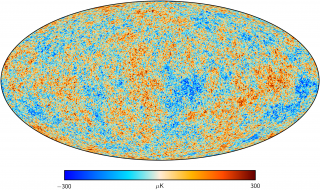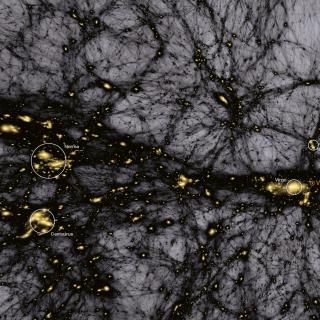Bibcode
Hernández-Monteagudo, C.; Ma, Yin-Zhe; Kitaura, Francisco S.; Wang, Wenting; Génova-Santos, R.; Macías-Pérez, Juan; Herranz, Diego
Bibliographical reference
Physical Review Letters, Volume 115, Issue 19, id.191301
Advertised on:
11
2015
Journal
Citations
80
Refereed citations
73
Description
We estimate the amount of the missing baryons detected by the Planck
measurements of the cosmic microwave background in the direction of
central galaxies (CGs) identified in the Sloan galaxy survey. The
peculiar motion of the gas inside and around the CGs unveils values of
the Thomson optical depth τT in the range 0.2 - 2
×1 0-4 , indicating that the regions probed around CGs
contain roughly half of the total amount of baryons in the Universe at
the epoch where the CGs are found. If baryons follow dark matter, the
measured τT's are compatible with the detection of all of
the baryons existing inside and around the CGs.
Related projects

Anisotropy of the Cosmic Microwave Background
The general goal of this project is to determine and characterize the spatial and spectral variations in the temperature and polarisation of the Cosmic Microwave Background in angular scales from several arcminutes to several degrees. The primordial matter density fluctuations which originated the structure in the matter distribution of the present
Rafael
Rebolo López

Cosmology with Large Scale Structure Probes
The Cosmic Microwave Background (CMB) contains the statistical information about the early seeds of the structure formation in our Universe. Its natural counterpart in the local universe is the distribution of galaxies that arises as a result of gravitational growth of those primordial and small density fluctuations. The characterization of the
FRANCISCO SHU
KITAURA JOYANES